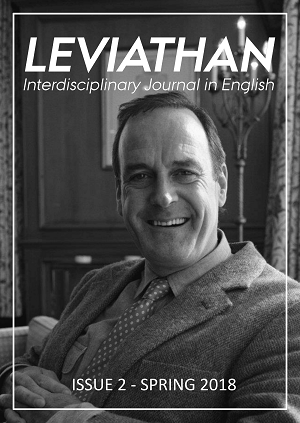Why I Work in the Field of Language Variation and Change
DOI:
https://doi.org/10.7146/lev.v0i2.104686Keywords:
linguists, language variation and change, historical linguistics, phonetics, phonologyAbstract
This perspective introduces the reader to what it is that a linguist working within the field of language variation and change does. I first outline what the goals of the field are. Next, I provide examples from my own work that illustrate what a researcher in my field may investigate and how. I also discuss what a teacher in my field can get to teach and why interacting with the students is, in my view at least, essential. We finish with a brief comment on whether and how the world can benefit from the insights of the field.
References
Baugh, J. 2007. “Attitudes towards variation and ear-witness testimony: linguistic profiling and voice discrimination in the quest for fair housing and fair lending”. In: Sociolinguistic Variation: Theory, Methods, and Applications. Edited by R. Bayley and C. Lucas, 338-348. Cambridge: CUP.
Baker, A.; Archangeli, D.; Mielke, J. 2011. “Variability in American English s-retraction suggests a solution to the actuation problem”. Language Variation and Change 23, 3: 347-374.
Bramley, L.; Maher, S.; Paterson, S.; Hejná, M. 2015. “Variability in British English /t/: preliminary study”. Paper presented at Manchester Forum in Linguistics, Manchester, UK. Available at https://misprdlina.files.wordpress.com/2013/06/variation-in-british-english-t.pdf.
Hall, K. 1995. “Lip service on fantasy lines”. In: Gender Articulated: Language and the Socially Constructed Self. Edited by K. Hall and M. Bucholtz, 183-226. New York: Routledge.
Hejná, M. 2015. Pre-aspiration in Welsh English: A Case Study of Aberystwyth. PhD thesis, University of Manchester.
Hejná, M. 2016. “Multiplicity of the acoustic correlates of the fortis-lenis contrast: plosives in Aberystwyth English”. Interspeech 2016, San Francisco: 3147-3151.
Hejná, M. 2018. “Hormonal effects on language and speech”. Talk given at Sounds of Language and Speech. Slides available at https://misprdlina.files.wordpress.com/2018/02/phon2018.pdf.
Hejná, M.; Scanlon, J. 2015. “New laryngeal allophony in Manchester English”. 18th International Congress of Phonetic Sciences, Glasgow.
Hejná, M.; Palo, P.; Moisik, S. 2016. “Glottal squeaks in CV sequences”. Interspeech 2016, San Francisco: 1136-40.
Hejná, M.; Cochrane, C.; Ackerman, L.; Wallenberg, J. 2017. “An endocrine basis for gender effects in linguistic variation”. Poster presented at the 4th International Workshop on Sound Change, Edinburgh, UK. Available at https://misprdlina.files.wordpress.com/2013/06/201704-wsc_edinburgh1.pdf.
Hejná, M.; Kimper, W. Submitted. “Pre-closure laryngeal properties as cues to the fortis-lenis plosive contrast in British English”. In: Yearbook of the Poznań Linguistic Meeting 2017.
Henton, C.G.; Bladon, R.A.W. 1985. “Breathiness in normal female speech: inefficiency versus desirability”. Language & Communication 5, 3: 221-227.
Jatteau, A.; Hejná, M. In prep. “How does aspiration dissimilation come about? Evidence from Halh Mongolian”. Papers in Historical Phonology 2.
Jatteau, A.; Hejná, M. 2017. “Gradient dissimilation in Mongolian: implications for diachrony”. Paper presented at The Third Edinburgh Symposium on Historical Phonology, Edinburgh, UK. Available at https://misprdlina.files.wordpress.com/2017/12/jatteau-hejna-esph-slides.pdf.
Jatteau, A.; Hejná, M. 2016. “Dissimilation can be gradient: evidence from Aberystwyth English”. Papers in Historical Phonology 1: 359-86.
Labov, W. 1966. “Some sources of reading problems for Negro speakers of non-standard English”. In: New Directions in Elementary English. Edited by A. Frazier, 140-167. Champaign, IL: National Council for Teachers of English.
Liberman, M. 2016. “The linguists strike back”. Language Log, http://languagelog.ldc.upenn.edu/nll/?p=23394 (Last accessed in March 7th, 2018).
Lippi-Green, R. 2012. English with an Accent: Language, Ideology, and Discrimination in the United States. London/New York: Routledge.
Liu, X.; Xu, Y. 2011. “What makes a female voice attractive?”. 17th International Congress of Phonetic Sciences, Hong Kong: 1274-1277.
Minkova, D. 2004. Alliteration and Sound Change in Early English. Cambridge: CUP.
Minkova, D. 2014. A Historical Phonology of English. Edinburgh: Edinburgh University Press.
Morris, J.; Hejná, M. In press. “Pre-aspiration in Bethesda Welsh: a sociophonetic analysis”. Journal of the International Phonetic Association.
Ohala, J.J. 1994. “Hierarchies of environments for sound variation; plus implications for ‘neutral’ vowels in vowel harmony”. Acta Linguistica Hafniensia 27: 371-382.
Pichler, H.; Hesson, A. 2016. “Discourse-pragmatic variation across situations, varieties, ages: I don’t know in sociolinguistic and medical interviews”. Language & Communication 49: 1-18.
Pinker, S. 1994. The Language Instinct. How the Mind Creates Language. New York: HarperPerennial.
Pipitone, R.N.; Gallup, G.G. 2008. “Women’s voice attractiveness varies across the menstrual cycle”. Evolution & Human Behavior 29: 268-274.
Raj, A.; Gupta, B.; Chowdhury, A.; Chadha, S. 2008. “A study of voice changes in various phases of menstrual cycle and in postmenopausal women”. Journal of Voice 24, 3: 363-368.
Simpson, A. 2009. “Phonetic differences between male and female speech”. Language & Linguistics Compass 3, 2: 621-640.
Stevens, M.; Harrington, J. 2014. “The individual and the actuation of sound change”. Loquens 1, 1: e003.
Stevens, M.; Harrington, J. 2016. “The phonetic origins of /s/-retraction: acoustic and perceptual evidence from Australian English”. Journal of Phonetics 58: 118-134.
Weinreich, U.; Labov, W.; Herzog, M.I. 1968. “Empirical foundations for a theory of language change”. In: Directions for Historical Linguistics: A Symposium. Edited by W.P. Lehmann and Y. Malkiel, 97-195. Austin: University of Texas Press.
Downloads
Published
How to Cite
Issue
Section
License
Attribution-NonCommercial-NoDerivatives 4.0 International (CC BY-NC-ND 4.0)
You are free to share (copy and redistribute the material in any medium or format).
However:
You may not use the material for commercial purposes.
You must give appropriate credit, provide a link to the license, and indicate if changes were made. You may do so in any reasonable manner, but not in any way that suggests the licensor endorses you or your use.
If you remix, transform, or build upon the material, you may not distribute the modified material.
You may not apply legal terms or technological measures that legally restrict others from doing anything the license permits.





